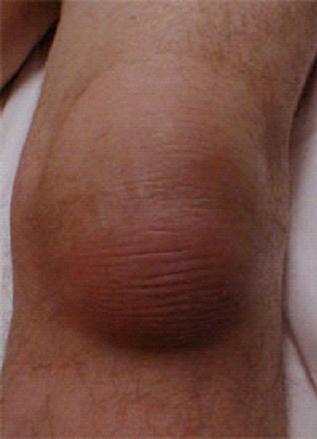Knee Bursitis Symptoms, Causes, Diagnosis and Treatment

What Is Knee Bursitis?
Bursa is a sac filled with fluid and acts as an important surface to decrease friction between the body tissues. 11 bursae are present in each of the knees and inflammation in any one of them can lead to knee bursitis. However, inflammation of bursa on the kneecap i.e. prepatellar bursa or below the joint on the inner side of the knee is generally common. Bursitis could either be infectious i.e. septic bursitis or noninfectious. The treatment is therefore done accordingly. Septic bursitis is very rare. Injury of knee often leads to knee bursitis.
What Are The Symptoms Of Knee Bursitis?
The following symptoms may evolve in knee bursitis:
- Pain.
- Swelling.
- Feeling warmth and tenderness.
These are generally the only symptoms that evolve. The affected bursa and cause of inflammation are major factors that determine the symptoms and severity. In case of septic or infectious bursitis, fever may also arise.
What Causes Knee Bursitis?
The most common causes of knee bursitis include:
- Bursa being infected i.e. septic bursitis.
- Persistent and frequent pressure due to kneeling or any other activity and posture.
- Direct blow or injury to knee.
- Bursitis could be a complication of certain diseases and disorders like rheumatoid arthritis and osteoarthritis.
What Are The Risk Factors Of Knee Bursitis?
The following factors can increase the risk of knee bursitis:
- Sports such as football, wrestling and volleyball in which a direct blow to knee is involved.
- Osteoarthritis.
- Obesity.
- Persistent kneeling.
How Is Knee Bursitis Diagnosed?
Diagnosing knee bursitis may involve several tests and procedures. The diagnoses do not only allow doctors to recognize knee bursitis but they also need to know which bursa is inflamed. The following are generally used to diagnose knee bursitis:
- Physical examination which may include several procedures like detecting warmth and swelling by pressing the areas of the knee, comparison between both the knees and movement of legs.
- X-ray could help doctors to rule out other conditions like arthritis or fractures.
- Ultrasound to examine swelling closely.
Magnetic resonance imaging or MRI to visualize bursae.- Aspiration i.e. if doctors doubt the bursitis is due to an infection, they use a needle to drain out some fluid for testing.
A combination of these tests and examinations can help doctors diagnose knee bursitis properly.
How Is Knee Bursitis Treated?
In case of septic bursitis, doctors will usually recommend a combination of antibiotics that could help cure knee bursitis. In other cases, the following methods are used:
- Therapies that include several exercises to strengthen muscles and improve flexibility.
- Aspiration.
- Corticosteroid injections. This injection is used when no other treatment works. Corticosteroid injection is usually successful but may result in pain and swelling for a few days.
- If nothing else works, doctors recommend a surgery in which the affected bursa is removed.
The treatment is done according to the cause, symptoms and severity of the condition.
By : Natural Health News




